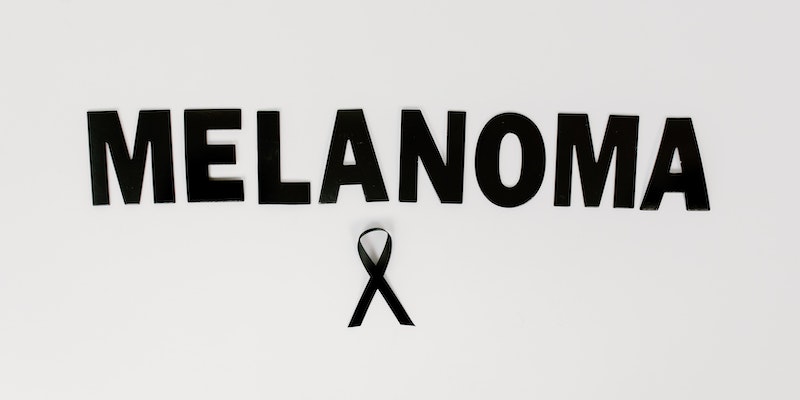An Overview of Skin Cancer Types and Risks
Oct 02, 2023
Skin cancer, a prevalent condition, poses a significant public health challenge. It affects millions worldwide as the most frequent cancer. Skin cancer is unequivocally the most widespread form of cancer, with its impact reaching millions globally. The frequency of cases has displayed a concerning upward trajectory, emphasizing the critical nature of addressing this health issue. The alarming statistics are a wake-up call for medical professionals and the public.
Skin cancer sees an extensive global presence, affecting people across various geographic locations and demographic groups. In 2012, the US recorded 5.4 million new nonmelanoma skin cancer cases, illustrating its severity. Awareness, prevention, and early intervention are needed due to this high occurrence.
High-Risk Populations
Skin cancer is more likely among fair-skinned persons because they create less melanin, which protects the skin from UV rays. Fair-skinned persons are more likely to have skin cancer, although dark-skinned and sun-avoidants can also.
Diverse Forms of Skin Cancer
Gaining a thorough grasp of skin cancer necessitates delving into its multiple variants. Being well-informed about the distinct types of skin cancer, their unique traits, and origins is indispensable for precise diagnosis and effective treatment. The varied types of skin cancer reveal themselves through specific appearances and implications.
Basal Cell Carcinoma
Renowned as the most prevalent form of skin cancer, basal cell carcinoma is notably linked with extended exposure to sunlight. This form manifests through waxy or pearl-like bumps, predominantly appearing on sun-exposed facial and neck regions. Recognizing the signs of skin cancer, especially basal cell carcinoma, is crucial for timely detection and intervention.
Melanoma
While melanoma may not occur as frequently as basal cell carcinoma, its aggressive progression and the severe risk it poses when left unaddressed are noteworthy. It originates from pigment-producing melanocytes, necessitating meticulous observation for any alarming signs of skin cancer and immediate medical consultation.
Squamous Cell Carcinoma
Originating from the epidermal squamous cells, squamous cell carcinoma is characterized by red, scaly patches, a recognizable sign of skin cancer. This type is primarily a consequence of prolonged exposure to sunlight. Acquiring an in-depth knowledge of squamous cell carcinoma is fundamental for its accurate identification and subsequent treatment.
Rarer Variants
Among the less prevalent variants of skin cancer are atypical fibroxanthomas, Merkel cell carcinoma, Kaposi sarcoma, and Paget disease. Each rare form presents unique challenges and necessitates specialized strategies for successful management.
Causes and Risk Factors of Skin Cancer

Recognizing the diverse origins and contributing elements linked to skin cancer is essential for shaping preventive measures and treatment plans. Various factors, including exposure to environmental elements and inherent genetic makeup, are implicated in the onset of skin cancer.
Exposure to Ultraviolet Light
UV light from the sun or tanning beds is linked to skin cancer. UV rays can damage skin cell DNA, causing mutations and abnormal cell development. UV light reduction is essential for skin cancer prevention.
Skin Type and Production of Melanin
Melanin production significantly affects skin cancer risk. Lighter skin produces less melanin, making it more sensitive to UV damage. However, all skin types must take precautions.
Genetic and Environmental Factors
Genetics and environment play a significant impact in skin cancer. Skin cancer risk increases with family history, past instances, exposure to dangerous substances, and radiation therapy. Skin cancer prevention requires awareness and management of these risk factors.
Considerations for Age and Gender
Skin cancer risk varies by age and gender. Sun exposure throughout life increases the danger in older people. Research shows men are more likely to develop skin cancer than women, emphasizing the need for demographic-specific awareness and prevention.
Detection and Diagnosis of Skin Cancer
Detection and diagnosis are crucial steps in effectively managing skin cancer. Identifying skin cancer primarily relies on observing skin changes and advancements in diagnostic technologies. Ensuring that individuals are well-informed about the signs of skin cancer can facilitate early intervention and better prognoses.
Self-Examination
People play a critical role in the initial identification of potential skin cancer. Regular self-examination of the skin for any unusual growths, moles, or changes is a proactive measure that aids in the early detection of the different types of skin cancer. Individuals can promptly recognize abnormalities and seek medical evaluation by becoming familiar with their skin.
Clinical Examination
Medical professionals are equipped with the expertise to conduct thorough skin examinations. Clinical evaluations may involve a visual inspection of the skin, palpation of lymph nodes, and detailed patient history. Recognizing the signs of skin cancer during these examinations is essential for recommending further diagnostic procedures and formulating treatment plans.
Biopsy Procedures
Biopsy remains a cornerstone in confirming the diagnosis of skin cancer. Depending on the nature and location of the suspected lesion, various biopsy techniques are employed. Histopathological examination of the biopsy sample is instrumental in determining the type of skin cancer and informing subsequent therapeutic decisions.
Tests
In some instances, additional imaging studies and laboratory tests are necessitated. These tests help assess the extent of the disease, particularly in cases where skin cancer has advanced. Imaging modalities like CT scans, MRIs, PET scans, and blood tests contribute to a comprehensive assessment of the patient's condition.
Prevention Strategies for Skin Cancer

Prevention is critical to managing skin cancer's public health consequences. UV exposure is linked to certain types of skin cancer; thus, early prevention is crucial. Effective methods can dramatically minimize skin cancer incidence and progression.
Sun Protection
Protecting the skin from excessive sun exposure is a foundational preventive measure. This involves:
- Seeking shade, especially during peak sunlight hours
- Wearing protective clothing, including long-sleeved shirts, pants, and broad-brimmed hats
- Regularly applying sunscreen with a minimum SPF 30 and offering both UVA and UVB protection
Avoidance of Tanning Beds
Melanoma risk increases with tanning bed use. Artificial tanning should be discouraged, especially among young people, to reduce skin cancer.
Regular Skin Checks
Routine skin examinations by healthcare professionals, coupled with self-examinations, facilitate the early identification of any signs of skin cancer. Timely detection enables prompt intervention and improves the chances of successful treatment.
Treatment Approaches for Skin Cancer
Skin cancer treatment requires a diverse strategy customized to its peculiarities. Skin cancer treatment depends on type, stage, location, and patient condition. A personalized treatment regimen eliminates the tumor while retaining function and attractiveness.
Surgical Intervention
Surgical removal is a commonly employed treatment for most skin cancers. The size and invasiveness of the cancer influence the extent of surgery. Options range from excising the tumor and some healthy tissue to more extensive procedures involving skin grafts or flaps, particularly for larger or more invasive cancers.
Radiation Therapy
Radiation therapy is an alternative or adjunctive treatment for certain skin cancers. It involves the use of high-energy rays to target and destroy cancer cells. This modality is particularly beneficial where surgery is not optimal or to address any remaining cancer cells post-surgery.
Systemic Treatments
Systemic treatments such as chemotherapy, targeted therapy, and immunotherapy may be indicated for advanced or metastatic skin cancers. These treatments work throughout the body to inhibit the growth and spread of cancer cells, addressing the disease on a broader scale.
Follow-Up Care
Patients need regular follow-ups to check for skin cancer recurrence and manage therapy side effects. Skin cancer patients benefit from ongoing monitoring and assistance.





